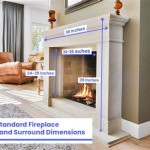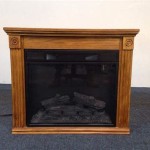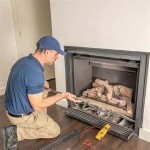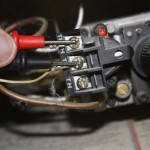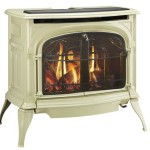What Is A Gas Fireplace Thermopile?
A gas fireplace thermopile is a crucial component responsible for generating the electrical current needed to operate the main gas valve in many standing pilot gas fireplaces. Understanding its function and importance is essential for homeowners who rely on these fireplaces for supplemental heat and ambiance.
Unlike gas fireplaces with electronic ignition systems that use an igniter and electricity from a wall outlet, older gas fireplaces frequently employ a standing pilot light system for ignition. In this system, a small pilot light remains burning continuously. This pilot light’s flame is critical because it directly heats the thermopile, which then generates the electricity required to keep the primary gas valve open. Without a functioning thermopile, the main burner will not ignite, even if the pilot light is lit.
The thermopile resembles a metal rod, typically made of dissimilar metals, such as copper and antimony telluride, joined together. When heated at the hot junction (the tip exposed to the pilot flame), the temperature difference between the hot junction and the cold junction (the base connected to the fireplace control valve) creates a voltage through the thermoelectric effect, also known as the Seebeck effect. This voltage, although small, is sufficient to power the gas control valve.
The generated DC voltage is usually in the range of 250-750 millivolts (mV) when heated by a healthy pilot flame. This voltage must be sustained to keep the gas valve open. If the pilot light is extinguished or weakened, the temperature difference across the thermopile decreases, leading to a drop in voltage. Below a certain threshold, the gas valve’s electromagnet will release, shutting off the main gas supply as a safety measure.
How a Thermopile Functions Within the Gas Fireplace System
The thermopile plays a vital role as part of a larger system. The pilot light is the initial ignition source, providing a constant flame that directly heats the thermopile. The thermopile, in turn, generates the necessary electrical current for the millivolt gas valve. This valve controls the flow of gas to the main burner. When the pilot light is lit and the thermopile is functioning correctly, the gas valve allows gas to flow to the main burner, which then ignites, providing heat.
The entire sequence is designed for safety and efficiency. The standing pilot system ensures a readily available ignition source, while the thermopile acts as a failsafe mechanism. If the pilot light goes out due to a draft, a gas leak, or any other reason, the thermopile cools down, voltage drops, and the gas valve automatically closes, preventing the uncontrolled release of gas. This autonomous shut-off feature is a key safety aspect of standing pilot gas fireplaces.
Many fireplaces also include a manual control knob with settings such as "Pilot," "On," and "Off." In the "Pilot" setting, the control valve allows gas to flow only to the pilot light. After lighting the pilot, the knob is typically held down for a period (usually 20-60 seconds) to allow the thermopile to heat up and generate enough voltage to hold the gas valve open. Once sufficient voltage is generated, the knob can be released, and the pilot light will remain lit. Turning the control to the "On" position allows gas to flow to the main burner for ignition.
Troubleshooting a Faulty Thermopile
A common issue with standing pilot gas fireplaces is the failure of the main burner to ignite, even when the pilot light is lit. This often points to a malfunctioning thermopile. Several factors can contribute to this malfunction. Over time, the thermopile can degrade due to corrosion, soot buildup, or physical damage to the wires. A weak pilot flame can also prevent the thermopile from reaching its optimal operating temperature, resulting in insufficient voltage.
Testing the thermopile is a relatively straightforward process that can be performed using a multimeter. While the pilot flame is heating the thermopile, measuring the DC voltage output with the multimeter provides a direct indication of its functionality. The voltage should fall within the range specified by the manufacturer, typically above 250mV and often closer to 750mV for a new thermopile. A voltage reading significantly below this range suggests that the thermopile is nearing the end of its lifespan and needs replacement.
Before replacing a thermopile, it's crucial to verify that the pilot light is clean and properly adjusted. A dirty or poorly adjusted pilot assembly can produce a weak or unstable flame, which will not adequately heat the thermopile. Cleaning the pilot assembly jets with a small wire or compressed air can often resolve this issue. Additionally, ensure that the thermopile is positioned correctly within the flame, allowing it to receive maximum heat exposure.
Replacing the Thermopile and Safety Considerations
Replacing a thermopile involves disconnecting the old unit from the gas valve and connecting the new one. Before undertaking this task, it is imperative to shut off the gas supply to the fireplace. This is usually accomplished by turning the gas shut-off valve located near the fireplace or at the meter.
Carefully disconnect the wires from the old thermopile from the gas valve terminals, noting their original positions. Attach the new thermopile wires to the corresponding terminals on the gas valve. Ensure that the connections are secure and properly tightened. Loose connections can cause intermittent failures or prevent the gas valve from operating correctly.
After installing the new thermopile, turn the gas supply back on and check for any gas leaks around the connections using a soap and water solution. If bubbles appear, it indicates a leak, and the connections need to be tightened further. Once the connections are verified to be leak-free, relight the pilot light according to the manufacturer's instructions. Allow the thermopile to heat up for the recommended time before turning the fireplace to the "On" position. If the main burner ignites successfully, the replacement has been completed correctly.
If the main burner still fails to ignite after replacing the thermopile, other components within the system may be faulty, such as the gas valve or the wiring. In such cases, it's recommended to consult a qualified gas fireplace technician for further diagnosis and repair. Working with gas appliances can be hazardous, and it's always better to err on the side of caution.

Identifying Gas Fireplace Parts Www Mygasfireplacerepair Com

Thermo Thermopiles Friendly Fires

Thermocouple Vs Thermopile In Gas Equipment S

Thermo Thermopiles Friendly Fires

Gas Fireplace Won T Stay Lit Magic Touch Mechanical

Gas Fireplace Missing Thermopile

Understanding Pilot Lights On Gas Fireplace S

How The Fireplace Thermopile System Is Wired

How To Test Your Thermopile Www Mygasfireplacerepair Com

Gas Fireplace 24 Thermocouple 750 Millivolt Replacement Thermopile
Related Posts

